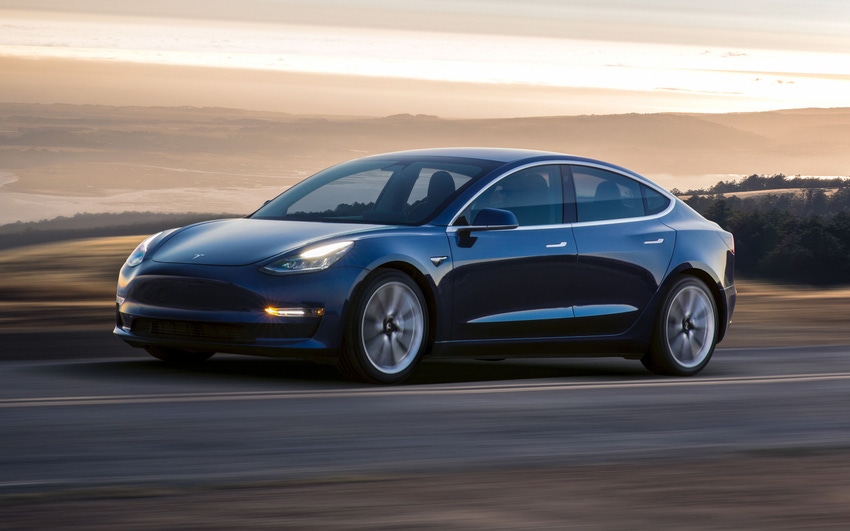Tesla Vehicles Fare Poorly in Reliability Survey
Performance is good, owner satisfaction is high, but Consumer Reports holds back on recommending the Model 3, S, and X.
March 19, 2019

Due to poor reliability, the country’s three best-selling electric vehicles all failed to garner coveted “recommended” status in Consumer Reports’ latest vehicle evaluations.
Tesla, Inc.’s Model 3, Model S, and Model X all received poor reliability reports from owners in Consumer Reports new automotive issue, due to such problems as bad door handles, loose body trim, cracked windows and misaligned rear hatches.
The problems damaged what would otherwise have been stellar evaluations, Consumer Reports said. “Sometimes it’s a difficult message for us to convey,” Jake Fisher, director of test for Consumer Reports, told Design News. “But there’s more than one metric when you’re evaluating a car.”
The Model 3 was the biggest surprise. After being recommended in 2018, most observers expected a similar result this year, but the vehicle’s overall evaluation dropped, due to its “worse than average” reliability. Similarly, the Model S luxury sedan was rated “worse than average” and the Model X crossover was “much worse than average” in terms of reliability.
|
Consumer Reports pulled the “recommended” status from the Tesla Model due to sub-par reliability. (Image source: Tesla, Inc.) |
The annual survey examines issues related to powertrain, electrical systems, suspension, brakes, power equipment, body hardware, in-car electronics and much more. This year, it pulled data from 470,000 vehicles.
In this year’s evaluations, only one of the six best-selling electric vehicles, the Chevrolet Bolt, was awarded recommended status. The BMW i3 and the Nissan Leaf also failed to receive recommended status. The Bolt was the fourth best-selling electric car in the US in 2018, with sales of 18,019, according to figures from Inside EVs.
Fisher said the absence of a recommendation was confounding to Tesla, Inc. and many of its owners. The Model 3, often called the “electric vehicle for the masses,” had US sales of 139,782 – about five times more than any other electric car.
Tesla responded to the poor ratings with a public statement saying that the issues were being fixed through manufacturing improvements. And some Tesla owners argued that they were satisfied with their vehicles, despite the reliability hiccups.
“Where some Tesla owners don’t agree is they feel we should have recommended the cars despite their reliability – because of how satisfying they are or because of what they do for the environment,” Fisher said. “They say the problems won’t render their cars undriveable. But in some cases, the door handles don’t work. Or the rear hatch doesn’t close because it was misaligned. Or the rear glass cracks because of a stress fracture. So, yes, it doesn’t prevent you from driving. But replacing the rear glass is no small matter.”
All of the Teslas performed well on the magazine’s test track. The Model S had one of the industry’s highest scores on the road test, and the Models 3 and X also did well. “Performance is exceptional, with quiet and thrilling acceleration, pinpoint handling, and firm yet comfortable ride…” the magazine wrote about the Model S.
Moreover, all received high owner satisfaction scores from those who responded to the survey.
RELATED ARTICLES:
Fisher said, however, the reliability issues overwhelmed those positive attributes and didn’t necessarily bode well for the future. “If a car has a lot of initial problems, what does it mean down the road?” he asked.
If the company’s reliability improves, however, its vehicles could easily move to recommended status, Fisher added. “Based on their performance, we would recommend any of them,” he told us. “It’s just a matter of fixing the problems they’re having.”
Senior technical editor Chuck Murray has been writing about technology for 35 years. He joined Design News in 1987, and has covered electronics, automation, fluid power, and auto.
ESC BOSTON IS BACK! The nation's largest embedded systems conference is back with a new education program tailored to the needs of today's embedded systems professionals, connecting you to hundreds of software developers, hardware engineers, start-up visionaries, and industry pros across the space. Be inspired through hands-on training and education across five conference tracks. Plus, take part in technical tutorials delivered by top embedded systems professionals. Click here to register today! |
About the Author(s)
You May Also Like



.jpg?width=300&auto=webp&quality=80&disable=upscale)

